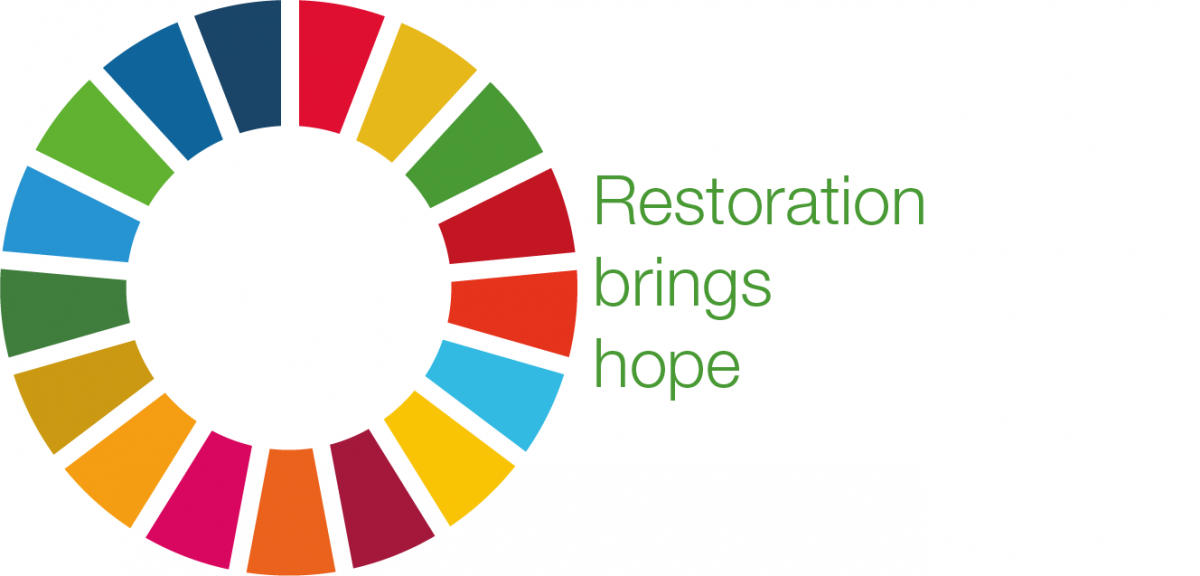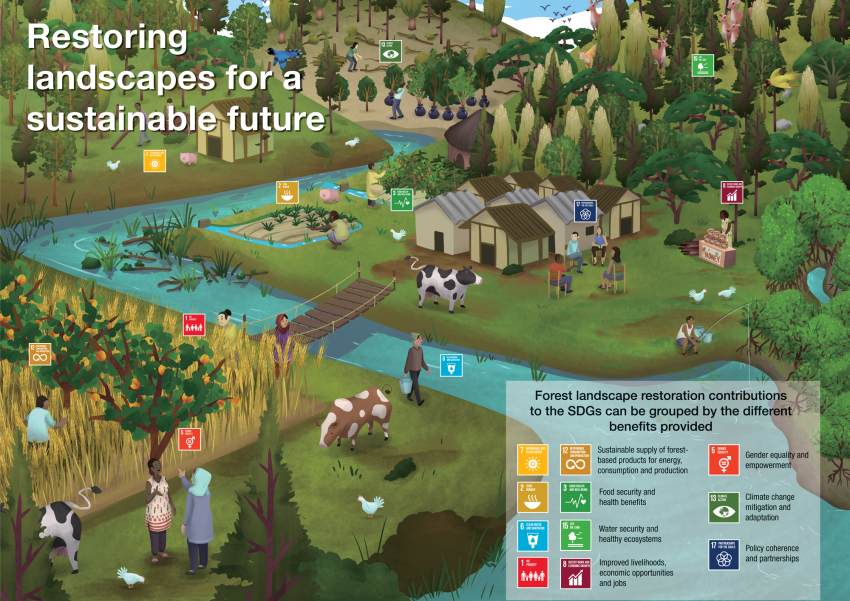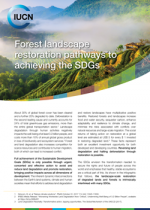From helplessness to hope through restoration
With successive waves of environmental foreboding predicted by the world’s leading scientific authorities, hopeful nature-based solutions for the planet’s future have never been more necessary. Fortunately, from increasing the productivity of degraded lands to fortifying the natural ecological processes that provision clean air, food and water, restoration brings the Sustainable Development Goals, and hope, within reach.

Photo: IUCN
“One million species threatened with extinction” – IPBES
“U.S. Climate Report Warns of Damaged Environment and Shrinking Economy” – New York Times
How much more dire news about the state of the environment can we take? Each time a critically important, albeit often depressing, global report on climate change, marine plastics or biodiversity loss emerges, many of us are left with a sense of outrage and a growing sense of helplessness. Where is the hope? What can we do to make things better?
In 2015, the world decided to qualify and codify its most glaring ills by collectively agreeing to a set of targets for humanity to aspire to by 2030. We know these ambitious and hopeful targets as the 17 Sustainable Development Goals (SDGs). Just agreeing on the SDGs was a watershed moment for the planet, but how do we actually take the next steps to achieve them?
Obviously, no single strategy for tackling such a massive and complex endeavour manifests in isolation. The ways in which communities, governments and international organisations envision and embrace the SDGs are as varied and innovative as the people committed to making them happen. The pressures of rising populations, climate change and dwindling natural resources make it vital that the ways we bring about sustainable development complement conventional conservation strategies – making better use of the remaining natural resources while restoring the health of degraded ecosystems.
The imperative to reduce and reverse land degradation is commonly considered essential for a healthy future. Fortunately, there is one flexible approach to restoring deforested and degraded lands – proven effective time and again in scores of countries across the world – making tremendous headway while significantly supporting over half of the SDGs. It is called forest landscape restoration (FLR), and it is a critical piece of this puzzle.
FLR is the process of regaining ecological functionality and enhancing human well-being across degraded and deforested areas with overlapping ecological, social and economic activities and values. Successful FLR is forward-looking and dynamic, focusing on strengthening the resilience of landscapes and creating future options to enhance and optimise ecosystem goods and services as societal needs change or new challenges arise.
How FLR brings hope through the SDGs
The forest landscape restoration approach improves degraded landscapes, incorporating voices and interests from farmers to policy makers. With around half of our land already either deforested or degraded, the subsequent potential to restore is vast. Once realised, the restoration benefits to people, ecosystems, biodiversity, and food and water systems offer a chance to reframe the current destructive paradigm. The process of FLR can address critical trade-offs while reinforcing cross-sector coordination and improving governance. For leaders, mainstreaming FLR approaches within national sustainable development agendas catalyses the transformational potential of the forest and land use sectors to the immense benefit of the SDGs — and us.
 Photo: IUCN
Photo: IUCN
FLR supports more SDGs than you might realise (more details in the publication below):
As an approach adopted across much of the world already, FLR supports the SDGs on a significant scale through efforts like the Bonn Challenge and through movements like the forthcoming UN Decade on Ecosystem Restoration (2021-2030). From improving livelihoods, food and water security, to supporting climate mitigation and adaption and gender equality, to giving species biodiversity a shot at a better future, FLR is one of the best nature-based solutions to help us achieve some of the enormous worldwide goals we have set for ourselves. FLR gives us hope.
—Blog by Corbett Nash, IUCN Forest Conservation Programme, Knowledge and Outreach Officer
Governments, leaders and decision-makers can take action on FLR in three important ways:
- Demonstrate leadership and commitment to FLR through actions and policy
- Generate institutional ownership and cross-sector coordination on FLR
- Unlock public incentives to facilitate public and private investment in FLR




